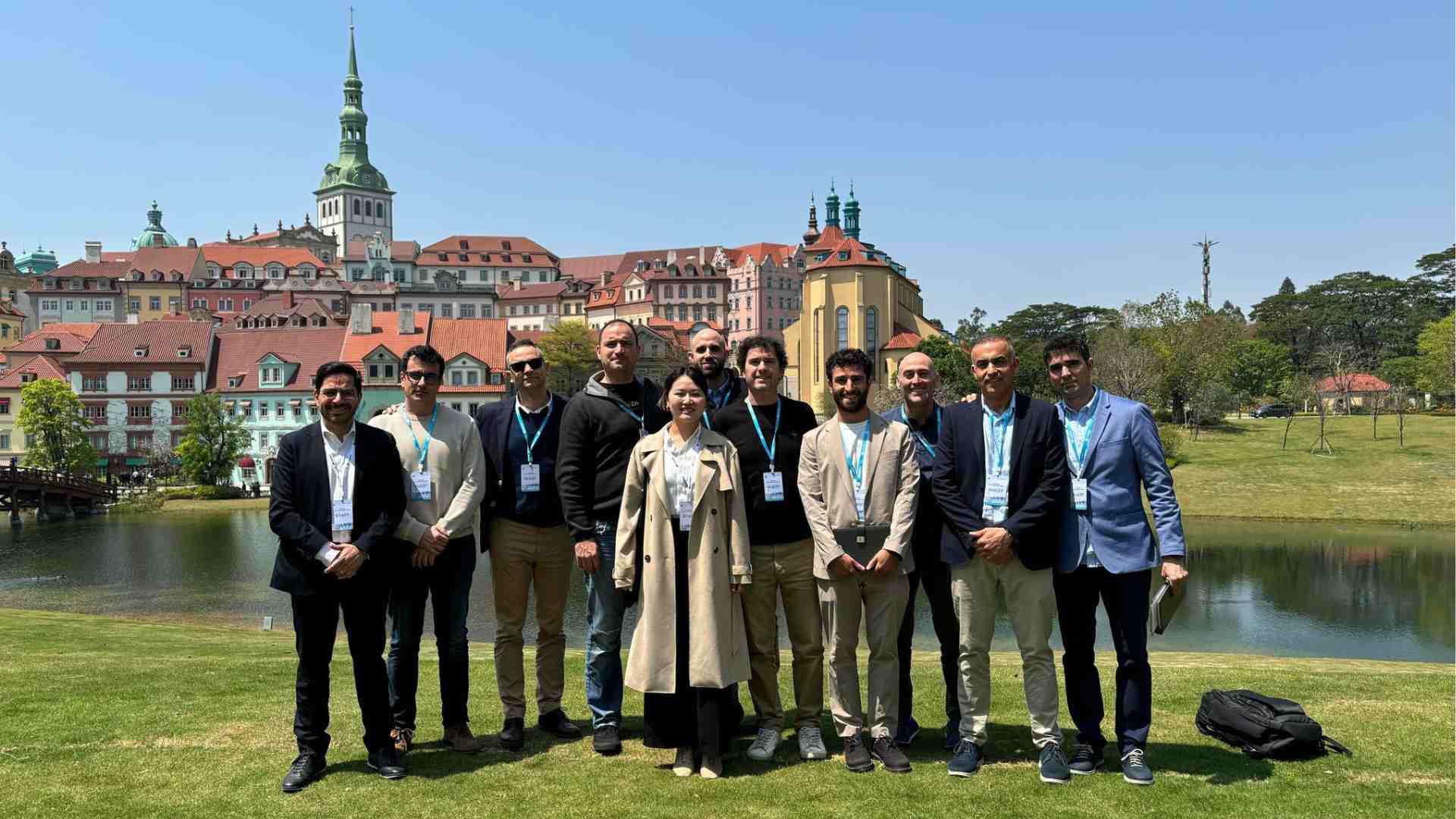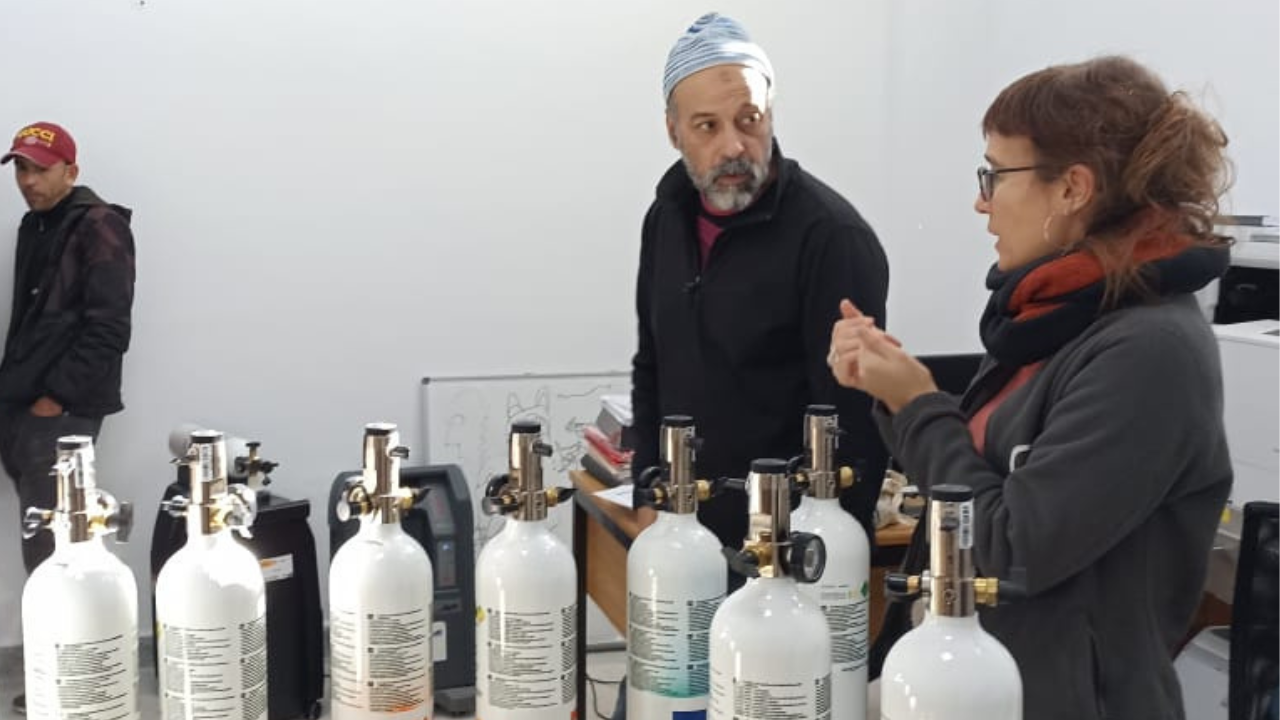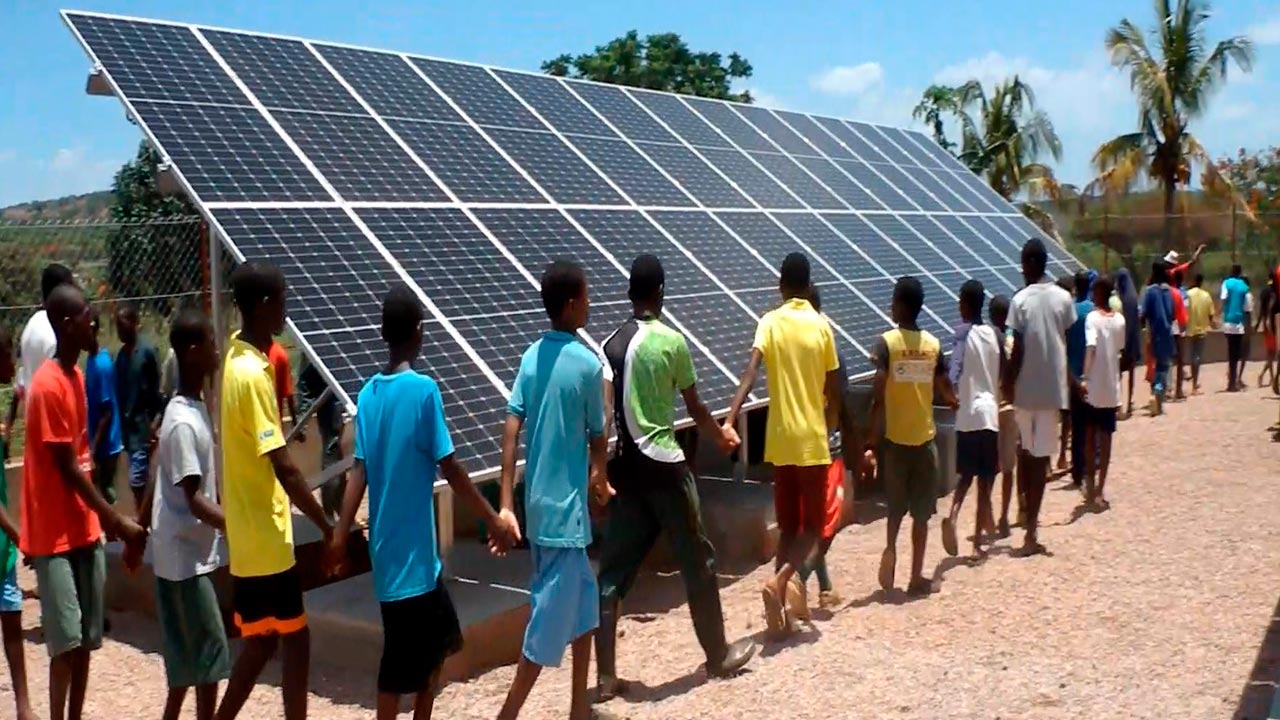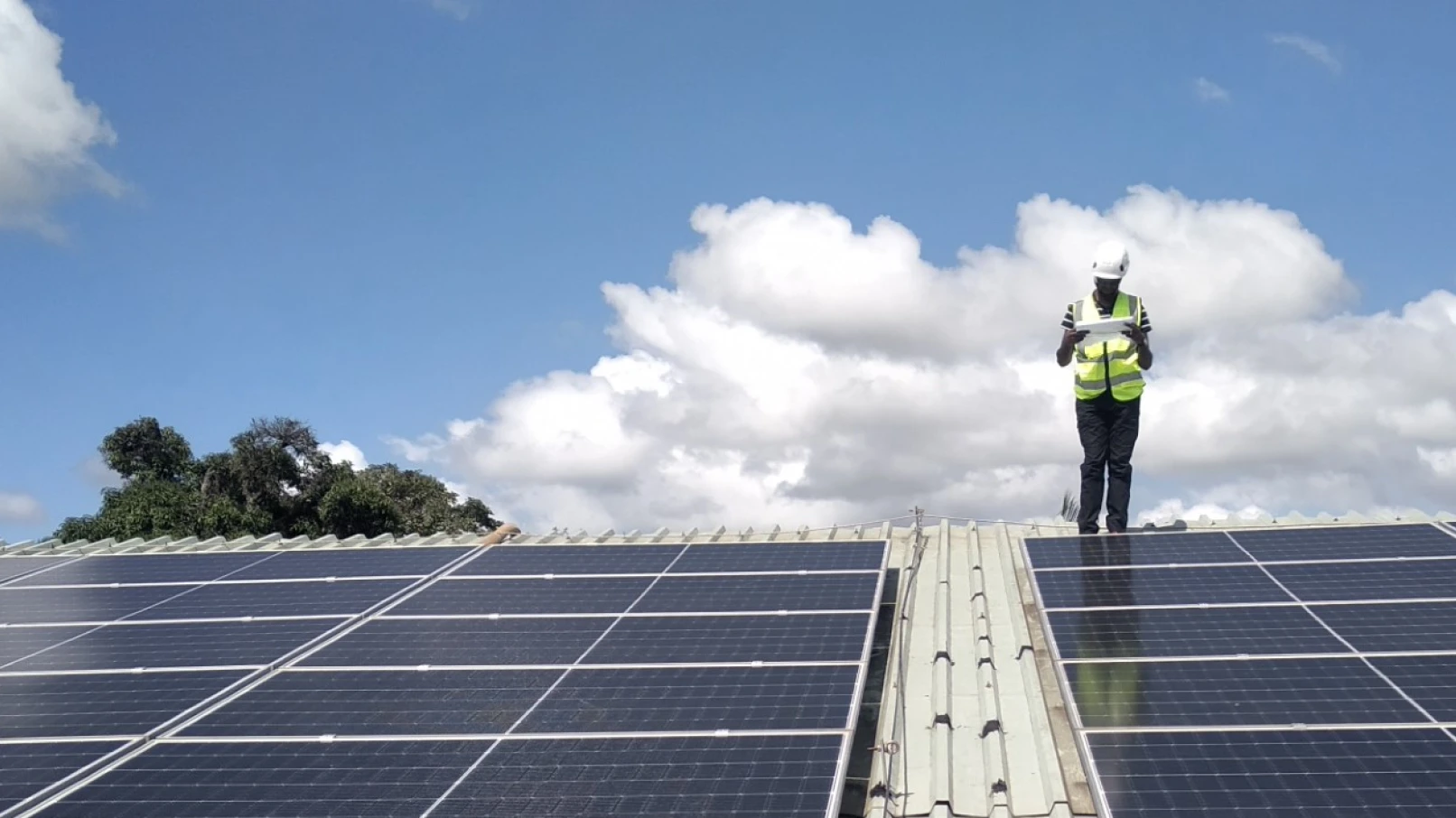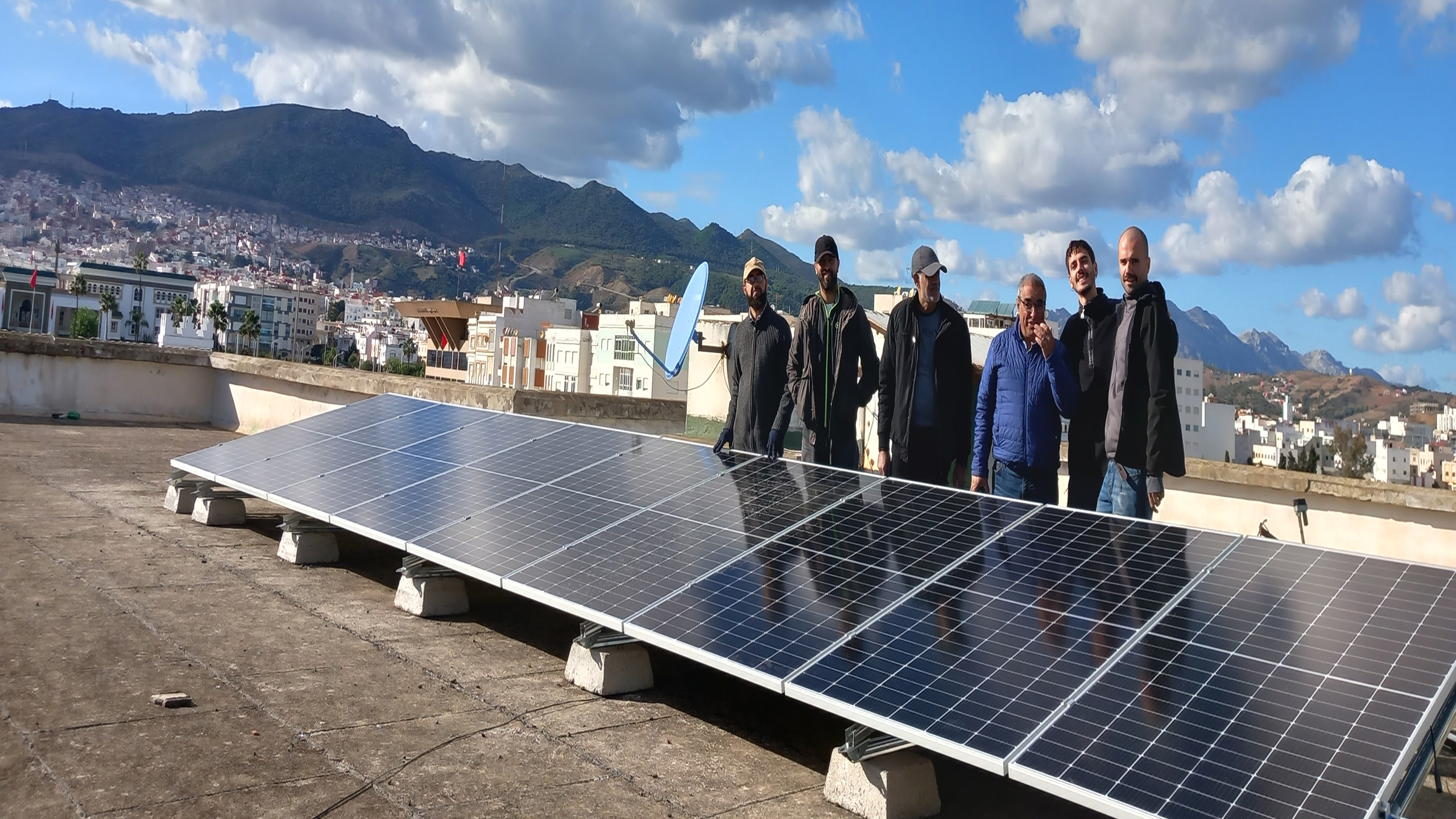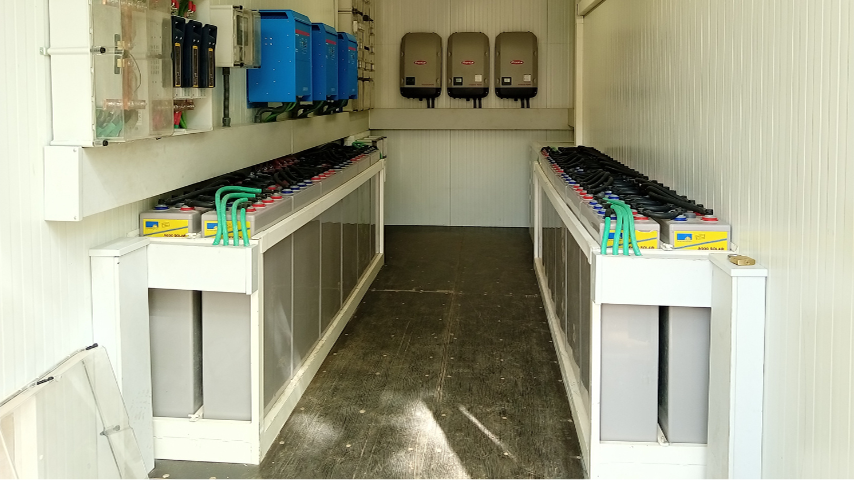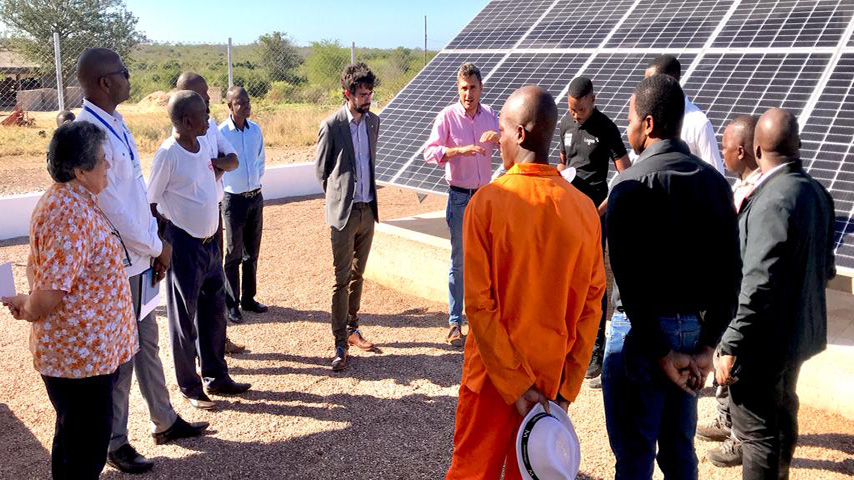What can floating photovoltaics bring?
Reading time: 2 minutes
Design project for a floating photovoltaic installation on the snowmaking pond of Espot Esquí

En el marc del projecte PSTD Bike Natura-Aventura, impulsat pel Consell Comarcal del Pallars Sobirà i cofinançat a través dels fons europeus Next Generation EU, hem desenvolupat el disseny tècnic d’una instal·lació fotovoltaica flotant per autoconsum sobre la bassa d’innivació “Els Estanyets”, ubicada dins el recinte de l’estació d’Espot Esquí, a 2.120 metres d’altitud.
Aquesta proposta s’inclou dins l’actuació 5 “Fotovoltaica flotant pistes d’esquí”, en el marc de l’eix 2 “Millora de l’eficiència energètica” del Pla de Sostenibilitat Turística en Destinacions (PSTD). L’objectiu és promoure noves solucions energètiques sostenibles en entorns d’alta muntanya, aprofitant infraestructures existents i reduint la petjada ambiental de les instal·lacions turístiques hivernals.
Advantages of floating photovoltaics in high mountain environments
The installation of photovoltaic fields on water surfaces offers various technical and environmental advantages:
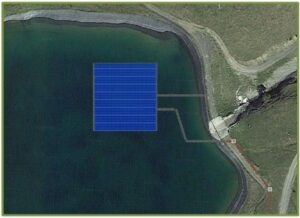
• Optimization of land use, especially in protected natural environments where landscape and territorial impact is critical.
• Improvement in solar panel efficiency due to the cooling effect of the water, which reduces operating temperature and increases electrical performance.
• Reduction of water evaporation from the pond and limitation of algae growth.
• Functional integration with existing infrastructures, such as snowmaking ponds.
These types of installations are especially relevant in the current context, where, after a prolonged period of drought, recent rains have allowed the recovery of water reserves in many reservoirs and ponds across the country.
This scenario reinforces the need to propose complementary and sustainable uses of these water resources, such as renewable electricity generation with zero direct emissions.
The project foresees the installation of rows of horizontal photovoltaic modules, placed on a floating structure specifically designed for extreme snow and wind conditions. Although they may be subject to change, the following preliminary points have been defined:
- Minimum available pond area
- Floating structure capable of supporting the snow loads at this altitude, with an associated maintenance protocol to ensure the correct operation of the installation. South orientation and placement of the solar field in the area with the most sunlight, minimizing shadows.
- High-efficiency monocrystalline (mono-PERC) photovoltaic modules with a product warranty of ≥ 15 years.
- Inverters with multiple MPPTs to optimize energy capture.
- Voltage drop < 3%, with wiring designed to adapt to the varying water levels of the pond.
- Technical and access walkways integrated into the floating island itself to facilitate maintenance.
- Flexible anchoring with adjustable tensioners to adapt to water level changes.
- Provision of a technical room to house inverters and electrical protection equipment
Characteristics of the floating structure
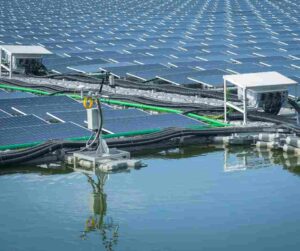 The support structure is based on panel floaters made of HDPE (high-density polyethylene) with UV protection, which provide a fixed inclination of 15º for the modules. Each module rests on three floaters, ensuring a buoyancy of 66 kg/m² and a separation that allows natural panel ventilation.
The support structure is based on panel floaters made of HDPE (high-density polyethylene) with UV protection, which provide a fixed inclination of 15º for the modules. Each module rests on three floaters, ensuring a buoyancy of 66 kg/m² and a separation that allows natural panel ventilation.
Additionally, the design includes maintenance floaters with a rough anti-slip surface to allow safe movement of technical personnel, as well as a walkway from the edge of the pond to the central floating island.
This project exemplifies the potential of floating photovoltaics as an innovative and replicable solution, particularly in high mountain areas where environmental compatibility is key. The design addresses both structural and operational requirements, ensuring a safe, efficient, and integrated installation within the environment.
As water resources recover, and in the context of the urgent energy transition, it is essential to leverage synergies between energy and territory to generate added value and move towards more intelligent and sustainable resource management.
Global Trends and Storage Technologies: Our Experience at the Huawei Installer Summit 2025
🕒 Reading time: 4 minutes
Global Trends and Storage Technologies: Our Experience at the Huawei Installer Summit 2025
On March 20, 21, and 22, Azimut 360 had the opportunity to participate in the second edition of the Huawei Global Installer Summit, an international event organized by Huawei at its headquarters in Shenzhen, China. This trip was made possible thanks to our distributor, Baywa r.e., who offered us the chance to attend this key event and gain first-hand insight into the latest trends and technological solutions from the Chinese brand.

Azimut was represented by Albert Calomarde, our Commercial Director, and Guillem Hernández, Engineer of the National Area. They had the chance to share experiences with other companies in the sector from across Spain and around the world. The summit included technical sessions, visits to research and development centers, and networking opportunities with other industry professionals.
One of the highlights of the event was receiving recognition from Huawei as a leading installer company—an honor that acknowledges our track record, the quality of our work, and our continued commitment to the brand’s technological solutions.

During our stay in China, we explored Huawei’s potential in the field of energy storage, its strong focus on research and development (R&D), and the latest innovations in its products and digital platforms. We visited operational facilities, innovation centers, and production lines, as well as product exhibitions with a strong emphasis on safety and efficiency features.
One of the most striking visits was to one of Huawei’s factories in the Shenzhen industrial complex. There, we witnessed first-hand how a battery module production line operates, equipped with cutting-edge technology to ensure the highest quality. Once manufactured, these modules undergo rigorous safety testing before being released to the market.

The experience was an intense and enriching immersion into the strategic direction of one of the sector’s global players. It allowed us to connect with professionals from different realities and contexts, exchange knowledge, and explore future opportunities. The event also featured success stories from installer companies around the world, as well as different approaches to large-scale battery deployment—one of the main challenges in the energy sector.
At Azimut 360, we want to thank Baywa r.e. for their trust and ongoing support, and the Huawei team for their hospitality and excellent organization throughout the entire trip.
Want to know more about how we use Huawei equipment in our projects?
Joan de Déu hospital complex. This project, carried out in close collaboration with Baywa r.e., involved the implementation of a highly efficient solar photovoltaic plant tailored to the needs of a healthcare environment. This partnership is a clear example of how we integrate top-tier technology to move towards a more sustainable, reliable energy model that prioritizes people’s well-being.
Ensuring Universal Access to Medical Oxygen
Reading time: 3 mins
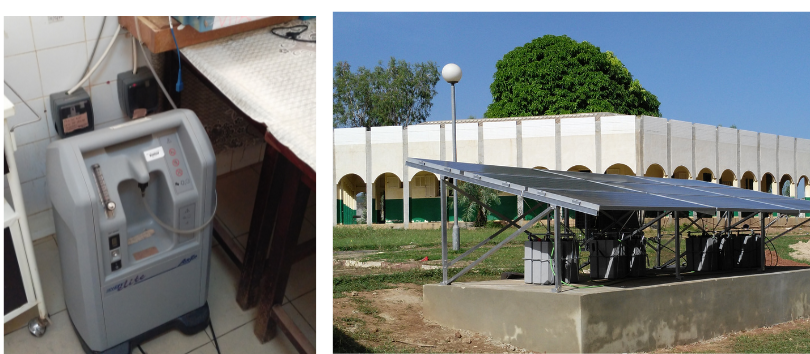
Ensuring Universal Access to Medical Oxygen: A Key Investment for Global Health
According to the latest report from The Lancet Global Health Commission on Medical Oxygen Security, more than 5 billion people (60% of the world’s population) do not have guaranteed access to safe and affordable medical oxygen. This is an often-overlooked issue, yet it causes hundreds of thousands of preventable deaths each year and affects millions of patients with critical medical needs.
Here are the key findings from the report:
- Extreme inequality persists. Low- and middle-income countries (LMICs) continue to be the most affected, with only 30% medical oxygen coverage for patients with acute needs.
- Additionally, the demand for medical oxygen continues to rise. Every year, 374 million patients require medical oxygen, particularly for respiratory diseases, surgeries, and intensive care.
- Healthcare infrastructure deficiencies must also be addressed. Only 45% of patients with hypoxemia receive oxygen in general hospitals in LMICs, while in primary healthcare centers, 93% experience shortages.
- One of the major issues is the insufficient use of pulse oximetry. Pulse oximetry is a non-invasive technique that measures blood oxygen levels using a fingertip device, enabling early detection of hypoxemia and ensuring appropriate medical care. Despite being available in some hospitals, it is only used in 19% of patients in general hospitals and 54% in tertiary hospitals.
- Pulse oximetry is essential for safe and affordable medical care and should be integrated into clinical protocols and healthcare training to ensure its proper use at all levels of care.
- The study highlights the urgent need for investment in the sector. Currently, an estimated $6.8 billion annually is required to ensure universal access to medical oxygen in low-resource countries.
Medical Oxygen as a Strategic Investment
The report emphasizes that ensuring access to medical oxygen is a highly cost-effective measure, comparable to childhood vaccination ($59 per DALY averted). This investment would accelerate progress toward 8 out of the 9 Sustainable Development Goals (SDGs) related to health and improve preparedness for future pandemics.
The Impact of Our Projects on Healthcare Training
To address this crisis, training healthcare personnel is essential. For this reason, one of the core pillars of our actions is capacity building. Through our projects:
- We train medical staff in the use of oxygen therapy and oxygen concentrators to ensure safe and efficient application.
- We implement training in pulse oximetry, improving the detection and response to hypoxemia in resource-limited settings.
By training healthcare workers, we aim to strengthen the sustainability of the healthcare system, equipping professionals with the tools and knowledge to mitigate oxygen shortages.
Case Study 1: Kotiakró Project, Côte d’Ivoire
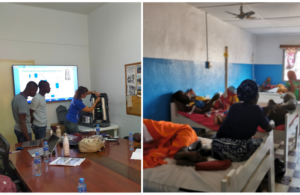
Through the project Ensuring the Right to Health in the Kotiakró Community, we are working to reduce shortages and improve access to essential healthcare services. This project includes training local healthcare staff in the proper use of oxygen concentrators and pulse oximetry, ensuring that critical patients receive adequate treatment.
As part of the project, a photovoltaic solar power system was installed to provide continuous electricity to oxygen concentrators 24/7, ensuring the availability of this life-saving medical treatment in the health center and maternity ward.
Case Study 2: Morocco Project – Ambulance Medicalization

In rural areas of Morocco, the lack of medical oxygen during patient transport poses a severe risk to critically ill patients. To address this issue, Azimut 360, in collaboration with the Chefchaouen Health Delegation and our local partner ADL, has developed a healthcare project to equip ambulances in the province with oxygen cylinders. These cylinders can be refilled locally at the Provincial Hospital once patients are transferred from rural health centers, preventing supply chain disruptions for remote locations.
Key Recommendations from The Lancet Global Health Report
Our engineer Mireia Gil contributed as an author to this study, from which we draw some key recommendations:
- Develop national plans to reduce the gap in access to medical oxygen.
- Mobilize international funding and increase collaboration with the private sector.
- Include pulse oximetry and medical oxygen as essential indicators in global healthcare databases.
- Promote innovative solutions in sustainable healthcare technology and infrastructure.
Access to medical oxygen is a matter of global health equity. With a well-defined strategy and political commitment, it is possible to ensure that no patient dies due to the lack of this essential resource. Now is the time to act.
Completion of the Second Phase of the Solar Energy Project at the Casa do Gaiato Farm in Mozambique
Completion of the Second Phase of the Solar Energy Project at the Casa do Gaiato Farm in Mozambique
The solar energy project for the Fazenda de Casa do Gaiato area has culminated in an on-ground photovoltaic installation that provides the agricultural area managed by the host house with an affordable, reliable and sustainable electricity supply. It is now fully operational.
The main objective of the project was to solve the problems arising from the grid electricity supply, which was of low quality, expensive and unreliable. The photovoltaic solar installation now powers the water pumping system, the chicken coop and the lighting of the agricultural area, significantly reducing the organization’s electricity bill and allowing reinvestment in new activities and projects for the benefit of the community.
Casa do Gaiato, located on the outskirts of the village of Massaca, in the district of Boane, Maputo province, has been a pillar of social support for the surrounding rural communities for more than 30 years. This organisation provides food, healthcare, education and vocational support to children without families, as well as primary and secondary education.
La instal·lació del sistema solar fotovoltaic ha estat realitzada amb èxit. Podeu consultar les dades a la fitxa de projecte. (link) Això ha permès a Casa do Gaiato ser més autosuficient pel que fa al subministrament elèctric i estalviar diners per finançar altres activitats de la fazenda.
Beneficis Assolits
- Estalvi Econòmic: Hem aconseguit una reducció significativa dels costos d’electricitat, permetent un ràpid retorn de la inversió.
- Sostenibilitat Ambiental: S’ha reduït l’ús de combustibles fòssils i les emissions de CO2.
- Millora de la Productivitat: Les activitats agrícoles són ara més rendibles gràcies a una font d’energia fiable.
- Impacte Social: Les condicions de vida dels nens/es, treballadors/es i famílies associades a Casa do Gaiato esperem que millorin notablement.

In addition to the installation of the system, practical training has been provided to Casa do Gaiato workers to ensure the long-term sustainability of the system. With these trainings we hope to increase the local capacity of the maintenance of the facilities in order to optimize the energy produced.
We are very satisfied with the results of this second phase of the project. Casa do Gaiato can now carry out all its agricultural and economic activities without interruptions or large expenditures on fossil fuels. This success not only benefits the organization, but also contributes to a more sustainable and equitable future for the entire community.
For this reason, we want to thank all those who have participated and collaborated in this project. To our team formed by Chloé for the coordination and Jordi who is already one more “gaiato”!


Azimut World: cooperation and development area
Key Challenges of Photovoltaics: Causes, Impact, and Prevention
Key Challenges of Photovoltaics: Causes, Impact, and Prevention

When a photovoltaic installation operates optimally, ensuring a safe and reliable electricity supply, it can become a large-scale power source. However, photovoltaic technology faces major daily challenges in terms of quality, installation, operation, and decommissioning. Below, we describe five main challenges facing photovoltaic technology:
Derating
What is Derating?
Derating refers to the power reduction in photovoltaic inverters caused by environmental factors such as heat, altitude, and voltage. In extreme situations, this phenomenon can even stop production. This effect is especially noticeable in areas with high temperatures.
Causes of Derating
The main causes of derating are:
- Temperature: When inverters generate heat while converting direct current (DC) into alternating current (AC) and the ambient temperature is high, the inverters reduce their power to protect internal components.
- Altitude: At high altitudes, the low air density facilitates ionization at high voltages, affecting inverter performance.
- DC voltage: Maintaining the proper operating voltage range is essential to avoid derating.
How to Prevent Derating
To avoid it, several actions can be taken:
- Proper installation: Follow the manufacturer’s recommendations for ventilation and avoid direct sun exposure.
- Quality of equipment: Choose high-quality inverters with efficient ventilation systems, either by convection or forced ventilation.
- Regular monitoring: Conduct periodic inspections to ensure optimal performance.
LID Effect (Light-Induced Degradation)
What is the LID Effect?
The LID effect refers to the degradation of photovoltaic modules caused by chemical reactions in silicon cells, leading to a loss of power and efficiency during the first months of solar exposure. This can result in a reduction of up to 10% of the initial power.
Causes of the LID Effect
The main cause of this effect is the reaction of boron with elements such as oxygen, iron, or copper present in the silicon cell. While boron is crucial for generating electricity, these reactions reduce electron flow, affecting the module’s efficiency.
Monocrystalline P-type modules are especially vulnerable to LID due to the difficulty in completely eliminating oxygen during the manufacturing process. In contrast, N-type cells, doped with phosphorus, show greater resistance to this effect.
How to Prevent the LID Effect?
- Applying high temperatures and currents.
- Using advanced technologies such as lasers or LEDs.
- Eliminating oxygen within the cell, though this is costly.
- Replacing boron with gallium.
Hotspot
What is a Hotspot?
A hotspot is a localized area within a photovoltaic module that overheats, potentially damaging the module or, in extreme cases, causing a fire. This issue arises from high resistance in a specific area, turning it into an electricity consumer that generates heat, exceeding 200°C.
Causes of Hotspots in Photovoltaic Modules
Hotspots can be caused by internal defects, shading, broken solder joints due to poor manufacturing, or improper handling. Other factors include accumulated dirt and permanent obstacles like trees or chimneys.
Prevention of Hotspots
- Choose materials from recognized brands with certified manufacturing processes.
- Ensure proper transportation of the modules.
- Follow the manufacturer’s instructions during installation.
- Regularly clean the modules according to site conditions.
- Conduct periodic inspections with specialized equipment.
Delamination
What is Delamination?
Delamination refers to the loss of adhesion between the different layers that make up a photovoltaic module. This defect can appear shortly after installation but may worsen over the module’s lifetime.
Causes of Delamination in a Photovoltaic Module
Delamination is usually associated with poor manufacturing or the use of low-quality materials. Additionally, improper transportation and handling during installation increase the likelihood of delamination. Environmental factors such as temperature, humidity, and UV radiation accelerate this process, especially in lower-quality modules.
Detection and Prevention of Delamination
Delamination can be identified through visual inspection, observing color changes in the module, white spots on the front, or bubbles on the back.
How to Prevent Delamination?
- Purchase materials from trusted brands with certified manufacturing processes.
- Ensure proper transportation, keeping the modules palletized and free from additional weight.
- Handle the modules carefully during installation, following the manufacturer’s recommendations.
- Periodically inspect the plant, performing visual checks and using specialized equipment at least once a year.
How Does Delamination Affect Photovoltaic Modules?
When delamination occurs away from the module’s edge, it can affect performance without posing an immediate safety risk. However, if delamination spreads to the edges, it can allow air and moisture to enter, leading to corrosion and irreversible deterioration of the module, which puts the plant’s integrity at risk.
LeTID Effect (Light and Elevated Temperature Induced Degradation)
What is the LeTID Effect?
The LeTID effect is a phenomenon that affects photovoltaic modules, particularly those using PERC cells. Discovered in 2012, it causes a power loss due to sunlight exposure, similar to LID, but occurs at operating temperatures above 50°C, whereas LID occurs at lower temperatures.
Causes of the LeTID Effect and How It Is Detected
Research points to hydrogen as the main culprit. During the cell manufacturing process, hydrogen atoms diffuse from other layers into the active area of the cell. High temperatures in the manufacturing process increase this diffusion, raising the risk of LeTID.
This issue is not visible to the naked eye, as LeTID is detected through an abnormal drop in panel performance. To confirm it, after ruling out other defects such as hotspots or delamination, electroluminescence equipment is used, just like with LID.
Preventing the LeTID Effect
Manufacturers and laboratories are working to better understand and mitigate the effects of LeTID. Some preventive measures in the manufacturing of PERC cells include:
- Using materials with low hydrogen content.
- Reducing temperatures during cell treatment.
- Using thinner wafers.
What You Need to Know
To prevent the effects of LID, hotspots, delamination, LeTID, or derating, it is crucial to carefully select both materials and manufacturers, optimize wafer treatment processes, and apply proper practices in transportation, installation, and maintenance of photovoltaic modules. Preventing and detecting these defects not only ensures greater efficiency and a longer lifespan for installations, but also provides significant long-term economic benefits.
In conclusion, the photovoltaic industry faces complex challenges that affect the durability and performance of installations. However, by using high-quality materials, applying advanced technologies, and ensuring proper maintenance, it is possible to mitigate these issues and ensure that installations operate optimally. At Azimut360, we work to provide comprehensive, tailored solutions for preventing and detecting these defects, ensuring that our clients’ photovoltaic installations not only maximize their efficiency but also extend their lifespan, generating sustainable economic benefits in the long term.
Second Phase of the Solar Photovoltaic Project at MRC/UVRI & LSHTM in Entebbe, Uganda: 45% Solar Fraction Achieved!
Second Phase of the Solar Photovoltaic Project at MRC/UVRI & LSHTM in Entebbe, Uganda: 45% Solar Fraction Achieved!
In Entebbe, a city on the shores of Lake Victoria in Uganda, there has been recent progress in the field of solar energy. With an exceptional 278 kWp photovoltaic generator and 930 kWh of LFP BESS, the biomedical research unit MRC/UVRI & LSHTM has achieved a 45% solar electricity fraction (which translates into savings on electricity bills). This initiative not only increases the sustainable energy generation capacity of the center but also sets a benchmark towards a more sustainable and energy-autonomous future. As the project is now in its second phase, this expansion has been built upon the previous solar photovoltaic installation, which consisted of a 327 kWp self-consumption system.
The photovoltaic arrays in this new phase have been placed on the roofs of the CRF Clinic, a newly built clinic by the center, and on the staff houses. Each roof directs all photovoltaic strings to two technical rooms where the solar photovoltaic inverters have been installed. Fuses and SPDs have been placed on both the roofs and inside the technical rooms to protect all DC strings. The AC protections and the remaining electrical and communication panels complete the installation inside the technical rooms. All the electricity generated in the CRF clinic area is transferred to the main site area via a recently installed medium-voltage line, an extension of the existing 11 kV ring of the Unit. A Battery Energy Storage System (BESS) is connected at low voltage directly to the Unit’s main switchboard. This consists of a set of outdoor cabinets, placed on a concrete slab.
What were the objectives of this installation?
The Medical Research Council in Uganda had a dual objective in mind. On one hand, to reduce electricity bills as much as possible, becoming immune to future fluctuations in electricity and diesel prices. On the other hand, and perhaps more importantly, to become carbon neutral and move closer to full energy autonomy.
How did we achieve this?
We conducted a prefeasibility study, which included monitoring the center’s energy consumption patterns. Then, we carried out simulations to optimize the expansion (which included photovoltaics + storage), and finally, we designed and engineered the solution using the highest quality brands available in the market. We concluded that the best area available to place the photovoltaic modules was around the staff houses and the new CRF roof, which also had considerable surface area. Reaching this point required extending the medium-voltage ring that the Uganda Unit already had. A total of 520 photovoltaic modules were installed on 7 roofs. As for the BESS, we opted to install a 300 kVA Power Conversion System (PCS) from the French manufacturer Socomec, along with a total of 930 kWh, divided into 5 outdoor cabinets of 186 kWh each, from one of the leading manufacturers of lithium iron phosphate, CATL. Last but not least, the entire solution is governed by a hybrid controller, which monitors the load at all times, the energy generated by the photovoltaic arrays, and the energy supplied by the grid or generators; this controller is also responsible for commanding the BESS, which will charge or discharge the battery according to the best possible strategy.
The Battery Energy Storage System (BESS)
As mentioned earlier, to store the excess solar photovoltaic energy, we chose the manufacturer Socomec. This is a company with over 100 years of experience in energy conversion, monitoring, and electrical switching. Specifically, the selected solution was the “SUNSYS HES L,” an ESS specifically designed for outdoor environments and renewable energy applications. This solution uses 3 types of cabinets, which are more modular and use less space: an electrical distribution board (AC-Cab), an Energy Conversion Cabinet (C-Cab), and each of the battery cabinets (B-Cab). Being more modular allows the system to easily adapt as needs grow. Moreover, this solution supports configurations that are compatible with both grid-forming and grid-following applications. The C-Cab in this case consisted of six 50 kVA power modules, which can be hot-swapped (i.e., they can be replaced even with the system online) in case of maintenance.
In summary, the solar photovoltaic expansion carried out at the Uganda Unit of MRC/UVRI & LSHTM represents a significant step towards energy autonomy and carbon neutrality. By combining top-class photovoltaic solar module technology with the latest advances in lithium energy storage, this project ensures at least 45% of the center’s energy needs are met from a clean energy source and represents a reference model for future projects in the region.
The involvement of companies like Azimut 360, specialized in promoting sustainable energy solutions and developing projects that encourage a clean energy transition, has been key to the success and future replicability of this initiative, which paves the way towards a greener and more self-sufficient future.
Driving the Energy Transition in Tetouan
Driving the Energy Transition in Tetouan: A leading photovoltaic training project in Morocco
Between the end of November and the beginning of December 2023, our international training team was on a mission in Tetouan to boost the energy transition in Northern Morocco through the transfer of technical skills to the municipalities of Tetouan, Chefchaouen, Mdiq, and Martil.
The project aims to contribute to the energy transition process, working on two main lines of action:
- Strengthening the capacities of technicians from the 4 municipalities in photovoltaic energy.
- Promoting an exchange of good practices in energy transition among municipalities, focused on both individuals and companies.
Currently, the municipalities of the Tangier, Tetouan Al Hoceima region face the challenge of improving their energy management in terms of savings and efficiency. The project planned capacity-building activities for municipal technicians from four municipalities in the region and members of the ANMAR Federation.
In the training sessions, various aspects were covered such as the preliminary evaluation of solar installations, as well as the assembly, installation, and maintenance of these systems.
Furthermore, an exchange of good practices in renewable energy and energy efficiency among municipalities associated with ANMAR was promoted, marking an important step towards the region’s energy sustainability.
Originally, the training was planned for a single photovoltaic installation. However, this initiative expanded to include two installations, aiming to strengthen the knowledge of local technicians, as well as the presence of renewable and local energy sources in public buildings. Theoretical and practical sessions were conducted, including visits to municipal buildings, reporting, and assembly and commissioning work for the two photovoltaic systems at two dependencies of the Tetouan City Council.
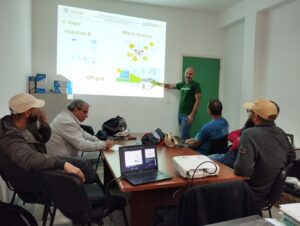
These predominantly practical trainings were especially valuable for municipal technicians, who already had a foundation in electricity and needed to expand their specific knowledge in terms of photovoltaics.
The participants, technicians from various municipalities in the area, were the protagonists of this training project. This diversity enriched the experience, allowing an exchange of knowledge and experiences among municipalities. The activities focused on Tetouan, but the project’s impact is expected to extend throughout the region.
A notable aspect of this project was the use of local Moroccan suppliers for the purchase of materials, a decision made to contribute to boosting the national economy of the sector and its autonomy. Additionally, collaboration with the local partner ANMAR was essential for the coordination and success of the project.
This project was funded by Barcelona Solidaria, reflecting a strong and productive bond between Spain and Morocco in terms of sustainable development. The ultimate goal of this initiative was to train Moroccan technicians in photovoltaic technologies, with the vision that these projects could be replicated in other parts of the country.
This transfer of knowledge is expected to have a lasting impact, not only in reducing energy dependence but also in promoting regional autonomy and sustainable development.
Azimut World: cooperation and development area
Why should we install solar hybrid system?
Why should we install solar hybrid system in Africa?
The Role of Batteries in Solar Hybrid Systems:
In recent years, electrochemical storage systems have emerged as significant players in the energy transition, alongside renewable sources. Unlike other conventional storage systems such as mechanical, thermal, or chemical, electrochemical storage offers several advantages, including high energy and power density, competitive market prices, and the ability to support continuous charge and discharge applications. Due to their scalability and flexibility, electrochemical batteries have become ubiquitous in our daily lives, powering portable appliances ranging from mobile phones to tablets or laptops. It comes as no surprise that even the automotive sector is transitioning from combustion engines to electric motors, coupled with electrochemical batteries.
In the photovoltaic (PV) sector, batteries have been widely used for the past decade to store excess energy produced by PV panels during sunny hours and utilize it during nighttime. The decision to shift power production to the night can be motivated by various factors, depending on the specific system in place.
In on-grid systems, both at the industrial and residential levels, most installed PV systems do not include batteries. The reason behind this lies in the cost implications. Shifting excess solar energy to the night hours leads to an increase in cost per kilowatt-hour (kWh) and an extended payback period. Providing quantitative examples is challenging as it depends on factors such as electricity bills, scheduled costs, battery prices, and battery capacity. According to our experience in the sector, to double the self-consumption through hybrid system we move from 4-5 years of Pay Back Time, with only the PV, to 9-10 years. For this reason, the majority of the installation is known as “0-injection” or “self-consumption,” where the peak production of the PV system matches the peak load demand.
Addressing Reliability Challenges:
However, if the local grid is unreliable and forces consumers to endure frequent power outages, using batteries becomes a more cost-effective and environmentally friendly solution compared to relying on diesel generators as backups. Industries and hospitals, for instance, benefit from integrating batteries into their systems as it ensures a higher degree of independence from the grid, resulting in a more stable and flexible energy supply. Several situations in Africa have demonstrated the critical need for battery integration, as hospitals were unable to operate in surgical rooms due to grid outages and temporary unavailability of diesel fuel for generators.
Moreover, powering your appliances with your own produced power also has a great advantage in terms of power quality and security. The first is crucial to prevent client appliances, which may be very costly, from being subjected to fluctuating grid power and thus getting spoiled over time. The second improves the resiliency of the industry or hospital in reacting to increases in fossil fuel prices or political instabilities.
Off-Grid Systems:
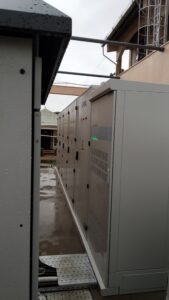
In the specific case of off-grid systems, batteries assume a pivotal role, offering a practical and indispensable solution. Their integration with photovoltaic (PV) technology becomes paramount to ensure an uninterrupted power supply 24 hours a day. These systems go beyond mere economic optimization and are designed to fulfill specific objectives. Depending on the application, the battery can be appropriately sized to meet the load requirements for two or even three consecutive days. Given the unpredictability of solar resources, these systems are consistently hybridized with small diesel generators as a contingency measure during extended periods of rainfall.
Looking Ahead:
In the next blog, we will enter into detail about the available types of batteries (lead-acid, lithium ion, flow batteries …) discussing which ones are preferred in one case and which in the other. Since the importance of storage in the electrification of the production and consumption sectors is well-known, there are always more and more emerging technologies entering the market. We will go through the most popular ones, describing their pros and cons in commercial and industrial applications.
For more information you can read the related article:
Azimut World: commercial & International area
Solar Energy for Hospitals in Sub-Saharian Africa: when does it make sense
Solar Energy for Hospitals & Biomedical Research Centres in Sub-Saharan Africa: When does it make sense?
Solar energy has been growing exponentially worldwide due to its numerous advantages and ability to meet the demands of a growing population. In Sub-Saharan Africa, the need for reliable power in hospitals and biomedical research centres has become increasingly crucial. This article will explore the reasons behind this need, the benefits of solar energy, and the optimal conditions for implementing solar photovoltaic (PV) systems, battery energy storage solutions (BESS), PV + diesel hybrid systems, and solar-powered medical oxygen production.
Why Hospitals and Biomedical Research Centres?
Hospitals and biomedical research centres play a vital role in the health and well-being of people in Sub-Saharan Africa. They are responsible for providing critical medical care, conducting life-saving research, and creating a sustainable healthcare infrastructure. As such, they require continuous, reliable, and efficient power to run their operations and support their mission.
The Need for a Reliable Power Supply
The lack of a reliable power supply in Sub-Saharan Africa poses significant challenges to hospitals and research centres. Frequent power outages disrupt essential services, equipment, and research[1]. This can lead to the loss of valuable data, life-threatening delays in care, and increased operational costs. Moreover, relying on the local grid can subject valuable client appliances to power fluctuations and diminish resilience in response to fuel price hikes or political uncertainties.
The need for a stable and efficient energy source is essential in addressing these challenges and ensuring the effective functioning of healthcare institutions.
The Benefits of Solar Energy
Solar energy offers several benefits for hospitals and biomedical research centres in Sub-Saharan Africa:
- Reliability: Solar energy systems can provide a stable and continuous power supply, reducing the risk of outages and minimizing disruptions to services and research.
- Cost-effectiveness: Solar energy systems have significantly reduced in cost over the past decade. This makes it more affordable for healthcare institutions to invest in solar power.
- Sustainability: Solar energy is a clean, renewable resource that can help reduce greenhouse gas emissions and promote environmentally friendly practices.
- Scalability: Solar energy systems can be easily expanded to meet the growing demands of hospitals and research centres.
- Simplicity and Local Expertise: Solar energy employs simple technology that can be easily maintained and learned by local personnel, reducing dependency on external experts.
- High-Quality Energy: Solar power generation is stable and controlled by advanced technology inverters, ensuring a consistent and high-quality energy supply for critical operations.
When to add Solar PV?
It is important to consider the following factors when deciding when to add solar PV to hospitals and research centres:
- Location: Areas with abundant sunshine and minimal shading are ideal for solar PV installations.
- Energy demand: Understanding the energy consumption patterns of the institution will help determine the appropriate size of the solar PV system.
- Available space: The facility must have enough space for the installation of solar panels and related equipment.
- Financial incentives: Governments and organizations may offer incentives, grants, or tax credits for the installation of solar PV systems, making it more affordable. Ask us more to find out current financing opportunities.
When to add Battery Storage?
Battery storage is useful when:
- Grid instability is prevalent, and backup power is crucial for maintaining essential services and research activities.
- Energy demand fluctuates throughout the day, and the stored energy can be used during peak demand periods.
Enhance the share of renewable energy compared to direct photovoltaic (PV) self-consumption.
Types of Battery Energy Storage Solutions (BESS)
Different chemistries of battery energy storage solutions can be used for hospitals and research centres, including:
- Lead-acid batteries: These are a cost-effective option but have a shorter lifespan and lower energy density compared to other battery types.
- Lithium-ion batteries: They offer a higher energy density, longer lifespan, and better performance but come at a higher cost.
- Flow batteries: These batteries are well-suited for large-scale energy storage and can provide longer discharge durations, but they are more complex and expensive than other options.
Hybridation with the Utility Grid and/or Existing Diesel Gensets
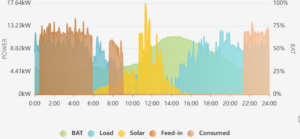
Integrating solar PV systems with the utility grid and/or existing diesel gensets allows for a more stable and flexible power supply. Hybrid systems can optimize energy generation and consumption, reducing reliance on diesel fuel and lowering operational costs. These systems can be designed to prioritize solar power, utilizing grid electricity as a secondary source and resorting to diesel generators only when essential.
Additional uses: Solar Energy for the Production of Medical Oxygen
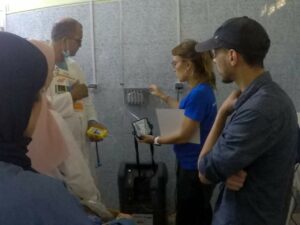 Medical oxygen is essential in hospitals for various treatments and procedures. In many Sub-Saharan African hospitals, oxygen supplies can be unreliable and costly. Solar energy can be used to power medical oxygen production systems, providing a sustainable and cost-effective solution. By harnessing the sun’s energy, hospitals can produce their own oxygen, reducing dependency on external suppliers and ensuring a steady supply for critical healthcare needs.
Medical oxygen is essential in hospitals for various treatments and procedures. In many Sub-Saharan African hospitals, oxygen supplies can be unreliable and costly. Solar energy can be used to power medical oxygen production systems, providing a sustainable and cost-effective solution. By harnessing the sun’s energy, hospitals can produce their own oxygen, reducing dependency on external suppliers and ensuring a steady supply for critical healthcare needs.
Solar energy presents a promising solution for hospitals and biomedical research centres in Sub-Saharan Africa, offering a reliable, cost-effective, and sustainable power source. Assessing the specific needs and circumstances of each institution is crucial in determining the optimal time and method for implementing a solar PV system with or without battery storage or hybridizing with the utility grid or with a genset. By embracing solar energy, healthcare institutions can overcome the challenges of unreliable power supplies and contribute to the long-term development of the region’s healthcare infrastructure.
Are you ready to explore the potential of solar energy for your hospital or biomedical research centre in Sub-Saharan Africa? Our team of experts is here to help you assess your needs, design the optimal solution, and provide a techno-economic proposal.
[1] https://www.news24.com/fin24/Economy/waves-of-blackouts-hit-major-cities-in-ivory-coast-20210505
https://apanews.net/2023/05/02/fuel-shortage-hits-malawi-regulator-blames-logistical-woes/
Azimut World: commercial & International area
Casa de Gaiato and its Commitment to Solar Energy
Casa de Gaiato and its Commitment to Solar Energy
Savings in electrical costs and Training for the new Generations
In the heart of Mozambique’s Maputo province, Casa do Gaiato (CoG) has been a beacon of social support for rural communities for more than three decades. This non-profit organisation, located in the Boane district, has provided a wide range of vital services, from food to education, to orphaned children and needy families in neighbouring villages. With one of the largest and most successful schools in the region, CoG not only provides primary and secondary education, but also provides child pickup services and social support to families.
However, since its inception, this institution has faced a major challenge: the lack of an affordable and reliable electricity supply. As one of the few entities in the area connected to the national grid, CoG has had to bear high electricity bills and, consequently, a financial burden that has reduced its capacity for self-sufficiency. This situation has forced the organization to increasingly depend on external sources of funding to continue its community activities and projects.
But the problem doesn’t end there. The instability and low quality of the electricity supply have had a direct impact on CoG’s daily operations. From the interruption of activities to the frequent repair or replacement of machinery and appliances, the organization has had to resort to expensive and environmentally unsustainable diesel generators.
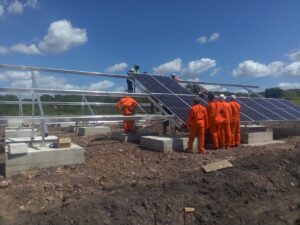
This energy crisis is not an isolated CoG problem; It is a reality that affects the entire surrounding community. The need for a clean, affordable and reliable source of electricity was more urgent than ever, not only for the organization, but also for the families who depend on its services.
This initiative aims not only to alleviate the financial burden of the organization by installing a photovoltaic solar system of 42.8 kW and 40 kWh of storage capacity, but also to train the next generation of renewable energy technicians.
The first phase of the project has focused on reducing CoG’s electricity bills, which have been a significant obstacle to its self-sufficiency. With the use of batteries for energy storage, the organization hopes to establish a partially independent power supply, freeing up resources for other community projects.
In a strategic decision that reflects its sensitivity to the needs of the community, Casa do Gaiato (CoG) has chosen to prioritize the residential area in the event of network blackouts. 40 kWh backup batteries are connected exclusively to this area, allowing a longer power supply in critical situations. This choice highlights the humanitarian approach of the organization, which considers the residential area as the most critical compared to the productive area.
To ensure the success of the project, CoG has worked closely with us as an engineering cooperative specialized in renewable energies. Since the award of the contract, both parties have closely monitored the activities carried out by the subcontractor, holding regular biweekly meetings until the completion of the project.
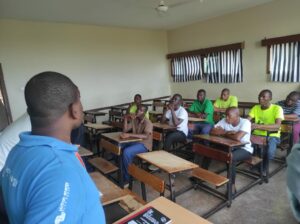
But this initiative goes beyond the simple installation of solar panels and batteries. The project in CoG is not only focused on short-term solutions. We understand that the sustainability of the installed system also depends on the training and education of the people who will take care of it. For this reason, an educational component has been incorporated into the project, offering theoretical and practical training in photovoltaic solar systems to young people who reside in its facilities. This training is not limited to CoG residents; it also extends to young people from neighboring villages, with the assistance of the Fundação Encontro.
That is why we think that the impact of this initiative could be transformative on several levels. This is not only the first project of its kind in the region, but also serves as a model for future programs in the field of renewable energy. Through collaboration with local authorities, CoG and the Fundação Encontro aspire to make this initiative a starting point for a green energy revolution in the community.
That is why the main objectives of the plan are doubly impactful: on the one hand, to provide CoG with a more affordable and sustainable electricity supply, and on the other, to train a new generation of professionals in the field of renewable energies. This is a gamble for the future that could be game-changer not only for CoG, but for the entire region.
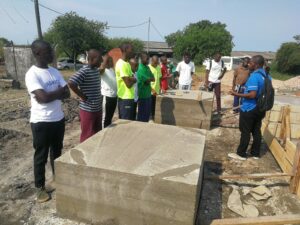
With an estimated annual saving of €3,500 in electricity bills and an educational impact that extends beyond its classrooms, Casa do Gaiato (CoG) is establishing a new paradigm in the use of renewable energies and education in Mozambique. This pioneering project has not only improved the financial sustainability of the organization, but has also opened up new learning avenues and job opportunities for young people in the community.
During the three months since its implementation, the photovoltaic installation has proven to be a resounding success. The annual saving of €3,500 is equivalent to the cost of university studies for three students, a significant contribution to CoG’s self-sufficiency. In addition, the backup system has been crucial in keeping operations uninterrupted, even during network blackouts that previously paralyzed the organization’s activities.
But the project goes beyond numbers. In the words of Arlindo Gabriel Baptista, professor of physics and computer science at CdG, this initiative has enriched the school curriculum, allowing him to introduce discussions on renewable energies in class. Baptista hopes this experience can lead to a vocational training course in photovoltaics at the school.
Rosa Francisco Anakondia, one of the students who participated in the training, reflects the transformative impact of the project. At the age of 24, Rosa has discovered a passion for renewable energy and aspires to a career in this rapidly expanding field. “I learned that it’s never too late to learn something,” says Anakondia, also highlighting her contribution to dismantling gender stereotypes in technical areas.
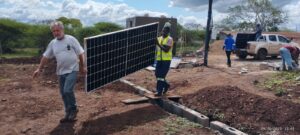
The impact of the project has been so important that work has begun on a 2nd phase of expansion of the photovoltaic installation in the area of La Fazenda, the Casa do Gaiato farm.
With this project, CoG has not only set a new standard in the use of renewable energy, but has also created a replicable model that could be the key to a sustainable energy revolution throughout the region.
Azimut World: international development cooperation area
